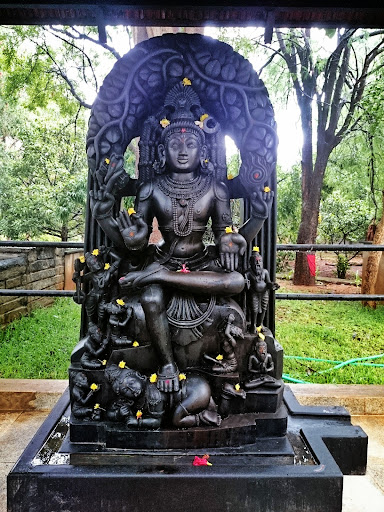How to Increase Your Lung Capacity
Method 1 of 3: Increasing Lung Capacity Quickly
-
1Breathe deeply. You can increase the amount of air your lungs can absorb in a short amount of time, without a long-term investment in exercise or training equipment. The trick is breathing steadily and deeply.
- Exhale completely and slowly. Practice it a few times before you start. Don't let any air linger in your lungs. This allows you to inhale more air on the next breath.
- Allow your diaphragm to descend by keeping your abdominal muscles relaxed. Your abdomen will expand as your diaphragm descends, making more room around your lungs, and allowing them to fill with air.
- Widen your arms, holding them farther away from your body, to help open up your chest.
-
2Inhale a deep breath. You probably want to fill your lungs to about 80%-85% capacity, to give your body room to relax. You do not want to fill your lungs to full capacity if it means that your muscles tighten up and you're uncomfortable.
- Have a friend with you, monitoring your breathing, if possible. You could pass out, in which case you'd want your friend to respond appropriately.
- You don't need to puff your cheeks out. You want the muscles in your face to be loose and relaxed. The muscles in your stomach and diaphragm are going to be the ones working.
-
3Splash water on your face. Do this while you're holding your breath. Scientists have figured out that splashing water on your face accelerates bradycardia, or the slowing of the heart rate, or the first phase of the mammalian diving reflex.
- Your body is preparing to dive underwater, where it will need to regulate its heart beat effectively and pass oxygen throughout the blood in order to keep you alive.
- Try to keep the water cold, but not icy. Icy water will trigger another reflex in your body that causes you to hyperventilate, or try to breathe quickly. Hyperventilation will hurt your ability to hold your breath for a long time.
-
4Relax your muscles and hold your breath. Try meditating, or closing your eyes. The less energy you expend, the longer your body will be able to hold its breath.
- Count to 100 in your head. Only focus on the number you are reciting mentally, and on your goal of reaching 100.
- Keep a note of which number you get to until you can't hold your breath any longer. That number will be the benchmark for your next attempt.
-
5Exhale slowly, and repeat 3-4 times. Don't let your air out too quickly. Exhale as slowly as possible, in a steady stream. Once you've practiced one repetition, do the whole exercise over starting from the beginning.
- After 3-4 times, your lungs will be able to hold much more air than they could just twenty minutes beforehand.
- Practicing this exercise regularly will also help train your lungs in the long term.
- 6Try simple breathing exercises. You can do these exercises around the house, at your office, hanging out while watching TV, the list goes on.[1]
- Blowing balloons is a good method for increasing lung capacity. While you're walking, at home doing chores, or have a spare second, practice blowing up a balloon and letting it deflate. Do this over and over again; you should notice your lungs' ability to pump more air, stronger and longer.
- Another method is to tape a long, light slip of paper (or a tissue) to the tip of your nose and try to keep it in the air by blowing it as long as possible. Time yourself and if you practice this, exercise regularly, you will be able to keep your slip of paper in the air much longer thus, increasing lung capacity.
- Breathing exercises during everyday activities can be helpful. Breathe in for 2-20 seconds, breathe out for 10-20 seconds, and slowly increase the rate. Soon you will find yourself breathing out 45 seconds-2 minutes if you practice enough! You can easily do it while driving, sitting in the office, watching television, playing video games, doing paperwork, at the desk at school, or when you are simply bored!
- Try hyperventilating before holding your breath. Hyperventilating simply means breathing in and out very quickly. Note: hyperventilating before diving can be dangerous because the urge to breathe can be delayed beyond the point where you pass out!
Method 2 of 3: Increasing Lung Capacity with Physical Exercises
-
1Exercise in water. Exercising in water will add an element of resistance training to your regimen. Your body will have to work overtime to supply enough oxygen into your blood, making for a good lung workout.[2]
- Develop a normal stretching and weight lifting routine out of the water. Make sure that you compensate for the fact that weights will feel lighter when you have the water around you. Practice this routine for a few days until you are comfortable with everything.
- Take it to the water. Submerge yourself up to your neck, and do the exercises while in the water. This may not seem like it is doing anything to help you at all, but don't worry. Due to the blood shifting into your chest cavity and the compression on your body, you will have to take shorter, quicker breaths whenexercising in the water. Research shows that your air capacity will be cut by up to 75% during this time, and your body will try to compensate for that. If your exercise in the water lasts long enough, and you do it regularly, your respiratory system will become more efficient, increasing your lung capacity.
-
2Participate in rigorous cardiovascular activities. Exercising is a great way to increase lung capacity. For at least 30 minutes, push your body to exhaustion so that your lungs are working hard. This hard work will pay off in better lung capacity.[3]
- Try aerobics. It can surprising how much lung capacity you can develop doing short bursts of intense training.
- Do cycling. Pepper your route with elevated climbs. Going up hills means your body needs to pump more blood to your legs; your lungs supply the oxygen to the blood.[4]
- Go running. Run on a padded track or treadmill to be kind to your knees and joints. Mix in sprints to make sure your lungs are working extra hard.
- Swimming - The best sport to improve on your cardiovascular fitness. At their peak, swimmers' lungs will use oxygen three times more efficiently than an average person.
-
3Work out at high-elevation. Working out at higher elevations is a surefire way to boost your lung strength. Higher elevation air contains less oxygen, making the workout tougher, but ultimately more rewarding, on your lungs.[5]
- If you're serious about increasing your lung capacity, live in high altitude for the duration of your training. At 8,000 ft (2,500 m) above sea level, the oxygen content in the air is only 74%[6] of what it is at sea level. This means your lungs have to work harder to get as much oxygen out into your blood.
- When you travel back down to lower-elevation, your body still has increased levels of red blood cells and hemoglobin — for up to two weeks — which means that your overall lung capacity is increased.
- Be careful not to train too hard at high elevation, as you could develop altitude sickness.
Method 3 of 3: Increasing Lung Capacity with Long-Term Exercises
-
1Create resistance. Your lungs will respond to training, so get some resistance training in your routine and watch your lung capacity increase.[7]
- Breathe in normally through your nose. Take deep breaths. Breathe out through your mouth with your lips still close together. Open them just slightly so a little bit of air can get out, and with resistance. Try and do this as often as possible. It makes the sacs in your lungs more used to having to hold air longer, stretching them out.
-
2Breathe in more than your brain thinks you can. Your brain, of course, looks out for the safety of your body, and is averse to stretching the body's limits. But the body can do amazing things when the brain is persuaded that everything is okay. Make sure you try this.
- For eight counts, breathe until your lungs are totally full. After each count you should be able to breathe in more.
- For the next eight to sixteen counts, take small sips of air. Feel your belly expanding. You shouldn't feel your shoulders moving.
- Hold your breath for a few seconds and release forcefully.
- After you feel "empty," make a "tssssss" sound for as long as possible. (This is called tizzling, and it mimics the resistance of playing a wind instrument.)
- Practice this periodically. When you train your brain to stretch the body's limits, your breathing intake will spike.
-
3Play a wind instrument. Playing a wind instrument is a great way to give your lungs a regular workout and have fun making music in the balance.[8]
- Learn how to play a woodwind or brass instrument such as a tuba, trumpet, trombone, oboe, clarinet, saxophone, or flute. This activity will help you control breathing and expand your lung capacity to utilize all the alveoli.
- Play in a marching band or a Drum and Bugle Corps. This activity requires more and more lung capacity utilization for your movement and playing and is quite healthy.
- You can also learn how to sing. Singing really works the diaphragm, and can aid in continuous breathing exercises. Singers, of course, need to have really strong lungs
Tips
- You probably already know to stay away from any kind of smoking, but you should also stay away from smoke-filled environments, where you're exposed to second-hand smoke, because ETS is still a form of inhaling smoke and can decrease you lung capacity
- In a pool, position your chest as far underwater as possible and breathe through a tube. The further under water you are, the more pressure is applied to your chest, making it hard to breathe. Make sure you can keep the tube above water or you will end up with lungs full of water. Note that at even a couple of feet down it may be impossible to inhale. Don't come up with lungs full of air - exhale before you return to the surface or you risk a lung barotrauma (this can occur at 2-3 meters or more).
Warnings
- Whenever you become lightheaded, breathe normally.
- Always swim with a buddy or in a public area when you are performing breathing exercises.
- When breathing under water (for example, when SCUBA diving), stabilize your depth and never hold your breath or inhale deeply while ascending. Air expands when ascending and your lungs can rupture if you are holding your breath.





